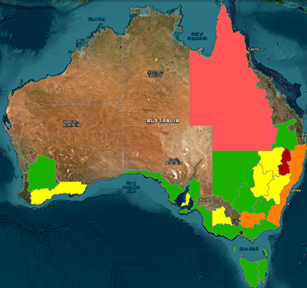In a major step toward improving transparency and consistency in the agricultural inputs sector, Fertiliser Australia has announced the development of a voluntary code of practice (CoP) for the labelling of soil bio-stimulants.
This industry-led initiative is designed to support growers, agronomists, and rural advisors by promoting clear, accurate, and consistent product information in a market which is growing rapidly but often lacks clarity.
As soil health and productivity remain top priorities, interest in bio-stimulants is on the rise – but until now, there’s been little standardisation in how these products are described. Fertiliser Australia’s new CoP aims to change that, making it easier for growers to understand what bio-stimulants contain, and how to use them effectively.
Bio-stimulants: A partner to fertiliser
Bio-stimulants are designed to complement, not replace, traditional fertilisers – working alongside them to enhance nutrient efficiency and support plant health.
Applied to soils or crops, bio-stimulants enhance the natural biological processes that help plants use nutrients more efficiently, grow stronger roots, and better withstand stress such as drought, salinity, or disease.
In this way, they may complement fertilisers by unlocking more value from applied nutrients and improving the overall performance of the farming system.
Common examples of bio-stimulants include microbial products – such as beneficial bacteria and fungi – and complex carbon-based compounds like humic and fulvic acids. These products activate biological activity in the soil and/or plant, promote nutrient cycling, and support plant resilience.
Although research on bio-stimulants is still evolving, combining them with fertilisers has shown benefits in certain situations, particularly as growers increasingly prioritise both productivity and sustainability.
A foundation for better choices
“The goal is simple,” says Fertiliser Australia chief executive Stephen Annells.
“We want to help growers and their advisors make informed decisions about bio-stimulant products – what they are, how they work, and what they contain.”
The first version of the code focuses on microbial products and complex carbon-based bio-stimulants, such as humic substances.
These categories were chosen because of their widespread use and the urgent need for clearer, more consistent labelling in this space.
As the industry continues to evolve, additional bio-stimulant categories will be added to the code.
Voluntary, inclusive, and industry-led
The CoP is a voluntary framework, with Fertiliser Australia members working toward compliance during the next 12 months.
This includes updating product labels and information to meet the standards set out in the code.
Importantly, non-members are also encouraged to participate, particularly those producing or marketing microbial and humic-based products.
Fertiliser Australia is currently exploring the possibility of introducing a new membership class specifically for bio-stimulant-focused businesses, recognising their growing role in the agricultural sector.
What comes next?
The code of practice will be officially launched in the coming months, providing a new benchmark for transparency, trust, and informed decision-making in the bio-stimulant space.
With clearer product information and greater consistency across the market, growers and advisors will be better equipped to integrate bio-stimulants into their systems, boosting productivity, supporting sustainability, and getting more from every fertiliser application.
For a sector which depends on innovation, evidence, and good practice, this is a step in the right direction.




